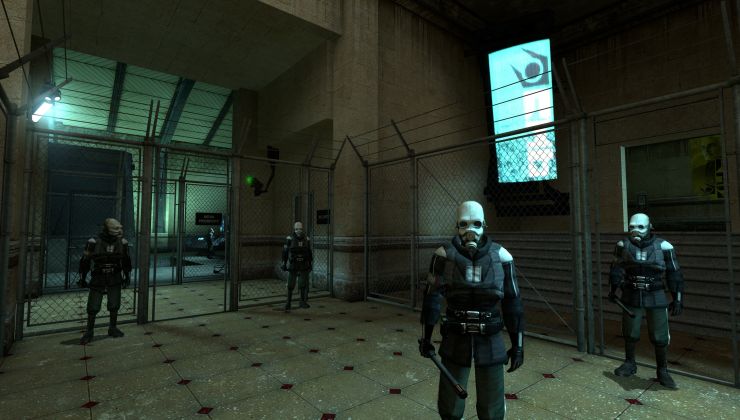With Valve and Easy Anti-Cheat in talks to get EAC supported within Steam Play, many readers asked about BattlEye as it's another anti-cheat solution blocking games actually working with Steam Play on Linux. I now have an answer on that.
I had a chat with the team at BattlEye and the result was basically this:
Unfortunately we can only support Linux if the respective game natively does so.
So there you have it. Titles like DayZ and PLAYERUNKNOWN'S BATTLEGROUNDS and many others are likely to never be fully playable on Linux with Steam Play. To be clear, I would love to be wrong of that of course. However, without the direct support of BattlEye, any progress towards it could be constantly broken any time it's tweaked and that's not a great situation to be in.
Since BattlEye does support Linux with native releases, if we want any title that makes use of it they're going to need to bring the game to Linux officially for now. For that to actually happen though, the elephant in the room is obviously the market share situation and how a lot of these developers don't see it as being worthwhile to do.
I've mentioned numerous times that such multiplayer titles will be a sore spot for Steam Play and it's likely to continue to be so for some time. At least, until we see the talks between Valve and EAC result in something.
There's also the new "Steam Trust" system Valve announced in January, as part of some changes coming to Steam. If developers end up using that (or EAC if it's eventually supported) then things for Steam Play may get better.
EAC-enabled multiplayer games may bring up the resurgence of GPU passthrough tech for Linux users until Wine & Proton have solid support for EAC. It's still a thing for the less purist Linux gamers open to using a Windows VM and a passed AMD or Nvidia GPU + Looking Glass.
I've personally had success running EAC-enabled games with the easy-to-use Intel GVT passthrough tech:
https://www.youtube.com/watch?v=95sLF_tLdWQ
How did you exactly do that? I tried to run a Win8.1 Pro with GPU Passthrough - but didn't work.
Do I need a second GPU for that, or can I just give the GPU to the VM?
Would be nice for my son - he wants to play Fortnite, but doesnt run on Ubuntu...
Last edited by einherjar on 14 Mar 2019 at 9:26 am UTC
As in, it appears like a GPU to Linux, but it's actually just software, and is passing internally all the requests put on it to another GPU on the system seamlessly.
That way you wouldn't need a second GPU for GPU passthrough. Performance shouldn't suffer too much either right?
For that matter, has anyone ever tried creating a 'gaming VM' application? Think VirtualBox, only stripped down and designed just for loading Windows onto it, doing GPU passthrough, and Steam Link streaming to the host Linux PC?
I can imagine an application where it pops up with a wizard, asks you for a Windows ISO, a valid Windows license key, your steam user account and password, and a 'setup' button. Then behind the scenes it loads the Windows ISO, runs through the setup on automode, automatically activates Windows, installs Steam and signs in for you, all hidden behind a progress bar, and when it's done Linux Steam would pop up with something like 'Windows VM is ready to stream!'.
Last edited by gradyvuckovic on 14 Mar 2019 at 9:36 am UTC
EAC-enabled multiplayer games may bring up the resurgence of GPU passthrough tech for Linux users until Wine & Proton have solid support for EAC. It's still a thing for the less purist Linux gamers open to using a Windows VM and a passed AMD or Nvidia GPU + Looking Glass.
I've personally had success running EAC-enabled games with the easy-to-use Intel GVT passthrough tech:
https://www.youtube.com/watch?v=95sLF_tLdWQ
How did you exactly do that? I tried to run a Win8.1 Pro with GPU Passthrough - but didn't work.
Do I need a second GPU for that, or can I just give the GPU to the VM?
Would be nice for my son - he wants to play Fortnite, but doesnt run on Ubuntu...
GVT-g is shared GPU passthrough, meaning only 1 GPU but it's only the Intel graphics that is supported. But recent Intel graphics is good enough for Fortnite.
What is the specs of the machine?
EAC-enabled multiplayer games may bring up the resurgence of GPU passthrough tech for Linux users until Wine & Proton have solid support for EAC. It's still a thing for the less purist Linux gamers open to using a Windows VM and a passed AMD or Nvidia GPU + Looking Glass.
I've personally had success running EAC-enabled games with the easy-to-use Intel GVT passthrough tech:
https://www.youtube.com/watch?v=95sLF_tLdWQ
How did you exactly do that? I tried to run a Win8.1 Pro with GPU Passthrough - but didn't work.
Do I need a second GPU for that, or can I just give the GPU to the VM?
Would be nice for my son - he wants to play Fortnite, but doesnt run on Ubuntu...
GVT-g is shared GPU passthrough, meaning only 1 GPU but it's only the Intel graphics that is supported. But recent Intel graphics is good enough for Fortnite.
What is the specs of the machine?
It's an AMD Ryzen 1800X with 1070Ti...
EAC-enabled multiplayer games may bring up the resurgence of GPU passthrough tech for Linux users until Wine & Proton have solid support for EAC. It's still a thing for the less purist Linux gamers open to using a Windows VM and a passed AMD or Nvidia GPU + Looking Glass.
I've personally had success running EAC-enabled games with the easy-to-use Intel GVT passthrough tech:
https://www.youtube.com/watch?v=95sLF_tLdWQ
How did you exactly do that? I tried to run a Win8.1 Pro with GPU Passthrough - but didn't work.
Do I need a second GPU for that, or can I just give the GPU to the VM?
Would be nice for my son - he wants to play Fortnite, but doesnt run on Ubuntu...
GVT-g is shared GPU passthrough, meaning only 1 GPU but it's only the Intel graphics that is supported. But recent Intel graphics is good enough for Fortnite.
What is the specs of the machine?
It's an AMD Ryzen 1800X with 1070Ti...
GVT-g only works with Intel CPUs and GPUs. You have to do traditional dedicated GPU pass-through methods, which will only work on certain IOMMU compatible hardware & BIOSes. That said, I think Fortnite might work in VMWare Workstation Player as there is a DirectX 10 renderer for the game still. I'll try it on my VMware install and see if it works.
Last edited by Xaero_Vincent on 18 Mar 2019 at 2:50 am UTC







 How to set, change and reset your SteamOS / Steam Deck desktop sudo password
How to set, change and reset your SteamOS / Steam Deck desktop sudo password How to set up Decky Loader on Steam Deck / SteamOS for easy plugins
How to set up Decky Loader on Steam Deck / SteamOS for easy plugins
See more from me